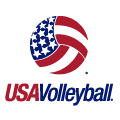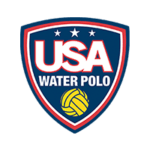Men’s Hockey Scholarships

Want to receive a full-ride scholarship for men’s college ice hockey? Recruits will need to prove that they are 100 percent committed to competing at the collegiate level. This means showing dedication on the ice, with hours of training and competing, as well as in the classroom working hard to make good grades.
As an equivalency sport, NCAA Division 1 and 2 hockey coaches are allotted a scholarship budget that they can divide up among recruits and current roster players. Full-ride scholarships are generally awarded to athletes who are top tier competitors with USHL junior hockey experience. Because college hockey heavily recruits internationally, these athletes are also contenders for full-ride scholarships, as college coaches use financial funding as an incentive to make the move to the US. While NCAA Division 3 programs are unable to provide athletic scholarships for hockey players, they often come up with financial aid packages, including merit-based scholarships, that are equal to or better than athletic scholarships. In this section, we outline what recruits need to know about men’s college hockey scholarships.
Quick Links
Related Articles
Can you get a scholarship for hockey?
There are four different types of offers that a men’s ice hockey athlete can receive. Even if a recruit is not awarded a full-ride or partial scholarship, they can still earn a roster spot as a recruited walk-on (preferred) or unrecruited walk-on. Below we briefly describe each of these four different types of offers.
- Full-ride scholarship offer: Men’s full-ride ice hockey scholarships are reserved for recruits that competed in the USHL junior hockey league. Though, this does not mean that recruits who didn’t play for a tier 1 junior hockey league won’t receive a full ride. Division 1 hockey programs also recruit athletes from tier 2 junior hockey leagues.
- Partial scholarship offer: With a maximum scholarship budget of 18, which falls short of the average team size of 28 for NCAA Division 1 men’s college hockey programs, coaches are more likely to award partial scholarships to as many recruits and roster spot holders as possible. The same can be said for Division 2 programs, which are allotted a maximum scholarship budget of 13.5, but have an average roster size of 31 athletes. Partial scholarships can be used to cover the cost of tuition, books, room and board, and other fees. They can also be combined with academic scholarship, grant and/or other forms of financial aid to cover the cost of college.
- Recruited walk-on (preferred): If a recruit is not offered an athletic scholarship, they can still be offered a spot on the roster as a recruited walk-on. This is common when college coaches do not have the scholarship budget to give every recruited athlete financial funding.
- Unrecruited walk-on: Some programs will hold walk-on tryouts if they still need to fill roster spots after the recruiting process ends. Student-athletes can try out for an opportunity to impress the coach and make the team.
Student-athletes looking to play for an ACHA will need to have strong academics in order to receive any form of financial aid. All aid packages at ACHA schools are academic-based.
Learn more about the transition from high school to college ice hockey.
How many college hockey scholarships are there?
| Division Level | Number of Teams | Total Athletes in Division | Average Team Size | Scholarships Limit Per Team* | Scholarship Limit Type** |
| NCAA D1 | 58 | 1,649 | 28.4 | 18 | Equivalency |
| NCAA D2 | 9 | 271 | 30.1 | 13.5 | Equivalency |
| NCAA D3 | 84 | 2,468 | 29.4 | – | N/A |
| ACHA | 361 | N/A | 28 | – | N/A |
| Totals | 512 | 4,388 | 28.9 |
*Scholarship Limits Per Team: The NCAA establishes scholarship limits per team that dictate the maximum number of full-ride equivalent scholarships that college coaches are permitted to award student-athletes each year. Fully funded Division 1 and Division 2 programs have a maximum of 18 and 13.5 full-ride equivalent scholarships to award, respectively. While recruits can and do receive full-ride NCAA hockey scholarships, they are generally reserved for top tier athletes who compete in the USHL junior hockey league. Ivy League schools do not offer athletic scholarships, but rather award financial aid through academic scholarships.
**Equivalency: As an NCAA equivalency sport, college hockey coaches divide up their scholarship budget to award as many recruits and current roster holders as possible with financial support. With 18 full-ride equivalent scholarships at the Division 1 level and an average of 28 players on the roster, men’s ice hockey has a larger scholarship budget than other NCAA sports. While this doesn’t mean that recruits should expect to receive a full ride, it does make it more feasible for college coaches to award full-ride scholarships, while still being able to provide financial aid to multiple athletes.
The NCAA D1 Council adopted legislation that loosened regulation regarding need-based aid and academic scholarships that are not tied to athletic ability. Effective August 1, 2020, teams in equivalency sports like hockey will not have any athletes’ need- and academic-based aid count against a team’s athletic scholarship limit. Prior to this rule update, athletes were required to meet certain criteria for their additional aid to not be counted against a team’s athletic scholarship limit.
Hockey teams will still have a maximum athletic scholarship cap, but student-athletes can seek to add as much need-based aid and academic scholarships as they qualify for. With school and family budgets being impacted by the coronavirus, this rule change means that hockey programs may now have more funds to extend to families and athletes that need it—especially at private colleges with higher tuition costs.
How many NCAA Division 1 hockey scholarships are there?
- D1 hockey scholarships per team: 18
- Total # of D1 men’s hockey teams: 58
- Avg. team size: 28.4
How many Division 1 hockey scholarships are there? Division 1 college ice hockey coaches have a maximum scholarship limit of 18 full-ride equivalents per team. Coaches are free to divide up their scholarship budget amongst current roster holders and recruits however they would like. It’s important to note that not all college ice hockey programs are fully funded, which means not every program will have the full scholarship limit to award. For programs that are fully funded and able to offer full rides, these big dollar scholarships are most likely to be given to USHL junior hockey athletes and international athletes. Twenty-one percent of NCAA Division 1 hockey players are from outside the US.
How many NCAA Division 2 hockey scholarships are there?
- D2 hockey scholarships per team: 13.5
- Total # of D2 hockey teams: 9
- Avg. team size: 30.1
NCAA Division 2 programs are allotted a maximum of 13 full-ride equivalent scholarships per team. Just as with Division 1 programs, not all Division 2 ice hockey programs are fully funded, which means the scholarship budget varies from school to school.
NCAA Division 3 hockey scholarships
- D3 hockey scholarships per team: 0
- Total # of d3 hockey teams: 84
- Avg. team size: 29
Athletic scholarships are not offered at the Division 3 level. Instead, recruits can aim for merit-based scholarships, if they meet the academic standards set in place by institutions. In many cases, athletes have reported that their Division 3 financial aid package was larger than the athletic scholarships they were offered by Division 1 and 2 institutions.
Everything you need to know about athletic scholarships.
How to get a hockey scholarship
College coaches generally prioritize scholarships money for recruits who compete in the USHL junior hockey leagues. These athletes are considered the best hockey talent in their age group, with 98 percent of USHL athletes going on to play at a Division 1 school and the remaining two percent being drafted by the NHL. Fortunately, there are a decent number of scholarships available at the NCAA Division 1 and 2 levels, so athletes playing in a lower junior hockey league still have the opportunity to receive an athletic scholarship.
Here are a few tips to better the athlete’s chances of getting an athletic scholarship.
- Maintain good grades: Academics are just as important as athletics when it comes to the college recruiting process. Student-athletes who are successful both academically and athletically rank higher on a college coach’s prospective recruiting list. Recruits should research the academic standards at their prospective schools and focus on their NCAA academic eligibility.
- Do your research: There is no guarantee that every school offers athletic scholarships. Recruits should research the programs on their prospective schools list to see which offer athletic scholarships at the NCAA Division 1 and 2 levels.
- Identify alternatives: Athletic scholarships are not the only way that a student-athlete can cover the cost of college. There are other forms of aid available to student-athletes, including merit-based scholarships, grants, work study, etc.
Hockey scholarship requirements
All student-athletes who wish to play for an NCAA athletic program must meet the NCAA eligibility requirements, which determine the athlete’s academics and amateurism status. Even after a recruit signs an NLI, the agreement is invalid if the athlete fails to meet the NCAA eligibility requirements upon graduating high school.
Best colleges with hockey scholarships
NCSA’s annual Power Rankings list identifies the best colleges with hockey by analyzing a variety of factors that play a large role in the college decision-making process, including academics, size, location and cost. Below is a list of the top 10 NCAA men’s ice hockey programs.
- Princeton University
- Harvard University
- University of Michigan
- Yale University
- University of Notre Dame
- Boston College
- Dartmouth College
- University of Wisconsin
- Cornell University
- Brown University
View the top NCAA Division 1 and Division 3 men’s ice hockey programs.
















